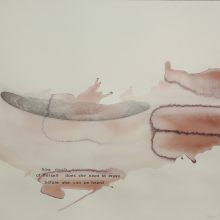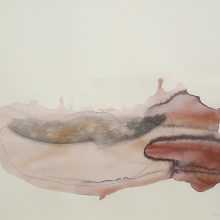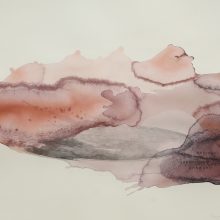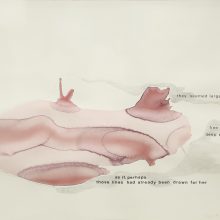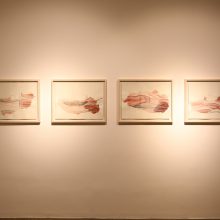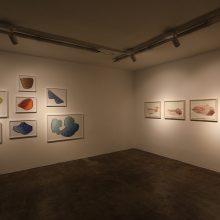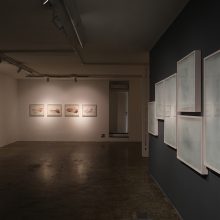Naiza Khan (The Black Dome)
Naiza Khan (b. 1968, Bahawalpur, Pakistan) is trained at the Ruskin School of Drawing and Fine Art, University of Oxford, and the Wimbledon College of Art, London. Her work has been widely exhibited internationally in different countries. Khan co-founded the Vasl Artists’ Collective in Karachi, which is part of the Triangle Network of international artists’ workshops. Moreover, she has curated three exhibitions of Pakistani contemporary art. Khan is the first artist to represent Pakistan in its inaugural pavilion at the Venice Biennale 2019.
————————————————————————————————————————————————————————————————————————————————————————————————————————————————————————————————————-
My work in Haft Paykar creates a parallel script to that of Nizami Ganjavi’s medieval poem. The layers of watercolor drawing are joined with words that originate from a script that I have been writing for several months. This script records the thoughts of one of the women in Nizami’s epic work. It is a reflection of her subjective experience and a flow of her ideas that are autobiographical in nature. This text also cites a body of work that I produced ten years ago: a series of steel armor works made for the female body. These armor works were positioned in a place between desire and aggression as well as heroism and vulnerability. Therefore, this script carries the residue of ideas and intentions that were an overspill to the motivations of that body of work. This is an unfinished script of thoughts under construction, joining several ideas from Nizami’s poem to my work with the female body and the subjective experience. It also points to the idea of how text and meaning can be written or unwritten about a specific moment in a place, and at the same time relate to other narratives and moments in history. I am interested in how writing can be used to work with subjective experience towards critical thought, and how words can become fluid in the way they convey meaning. As an artist working with ideas of gendered space and because the female body is perceived differently from one context to another, I allow room for fluidity of meaning and multiplicity of perspectives. The drawings and their related word/text, look at the way the body deals with desire and self-knowledge, and the intersection of both can be visualized as texts and images in a way that brings to the fore such complexity.
